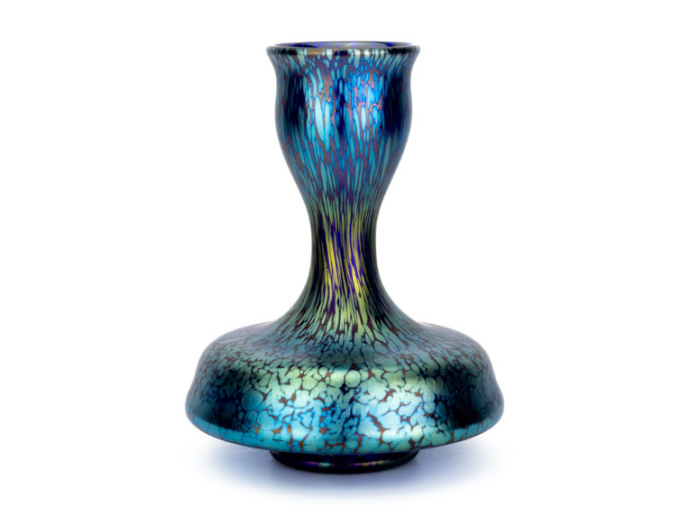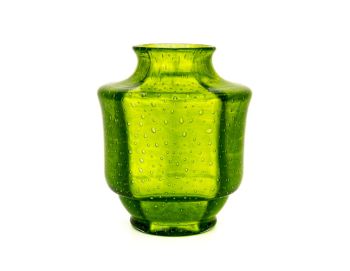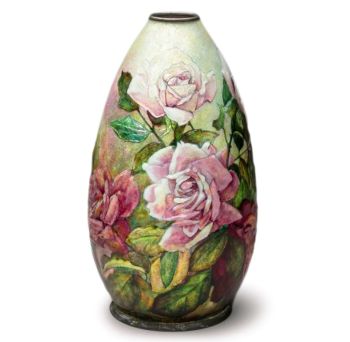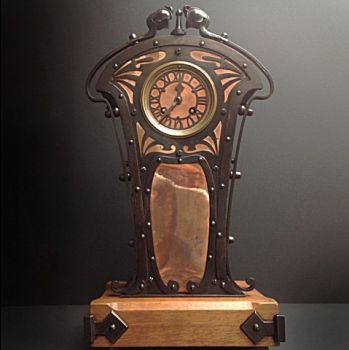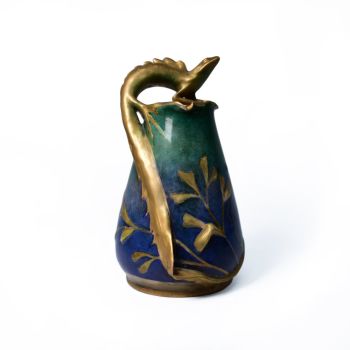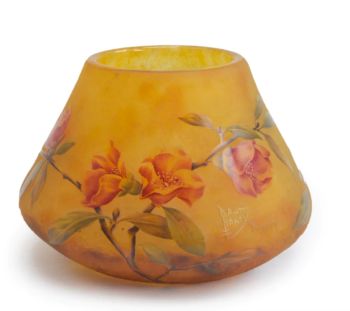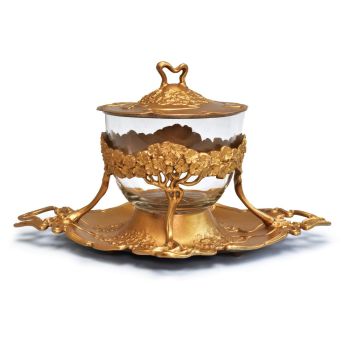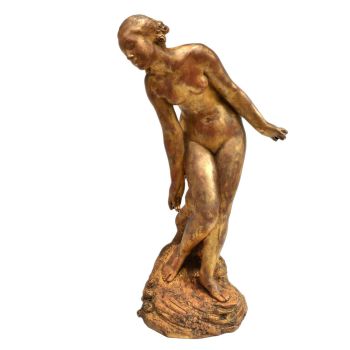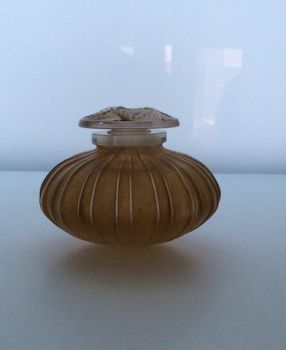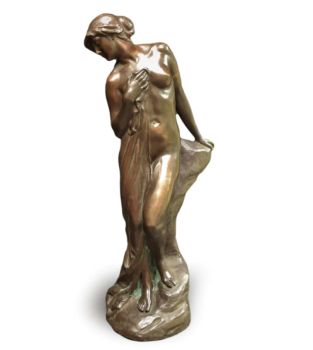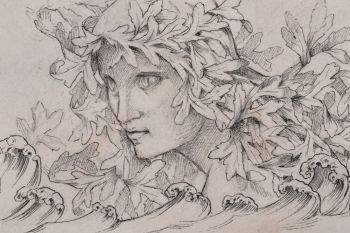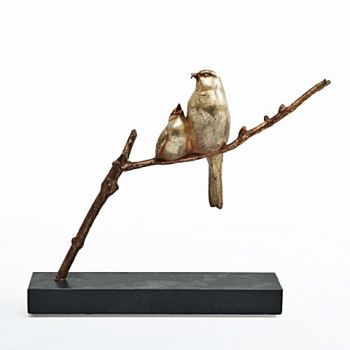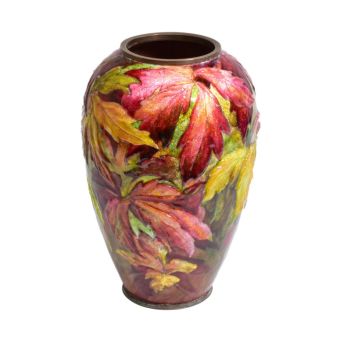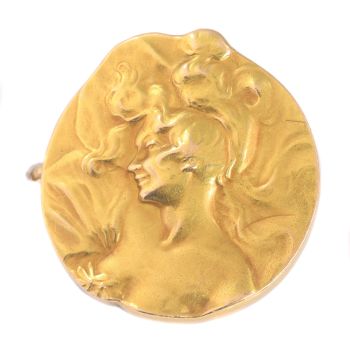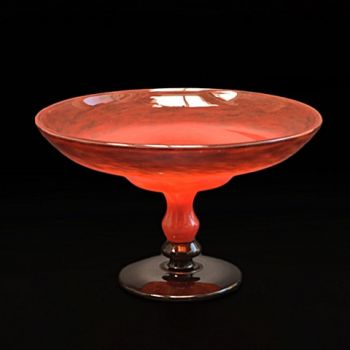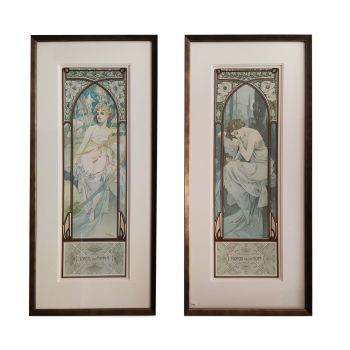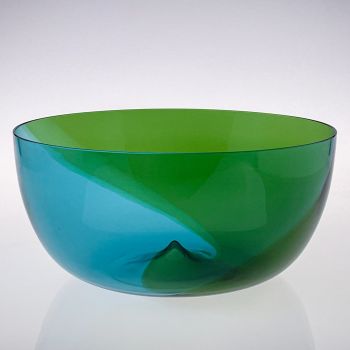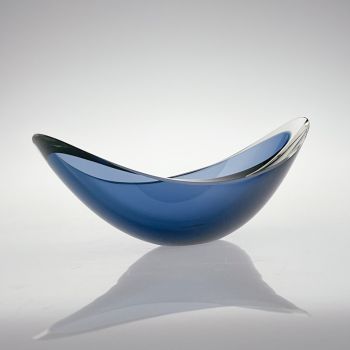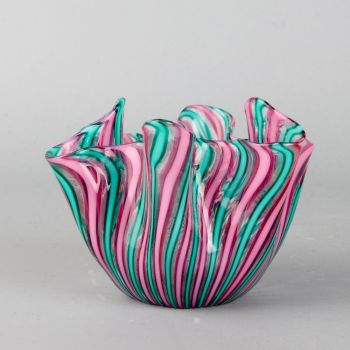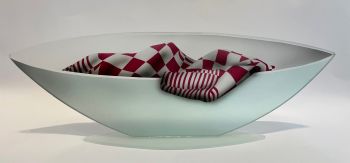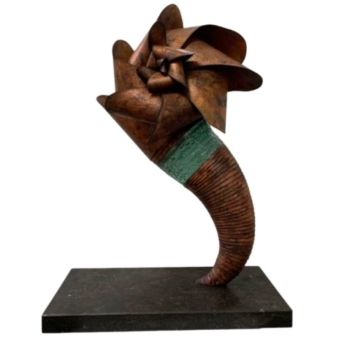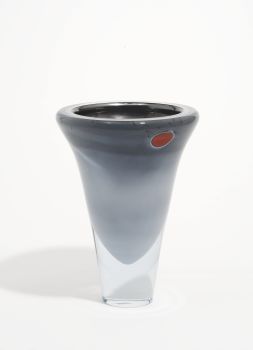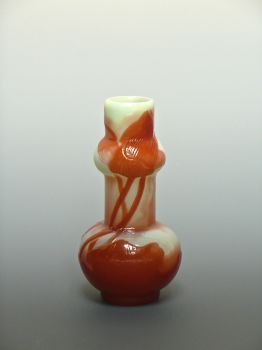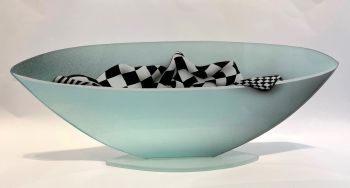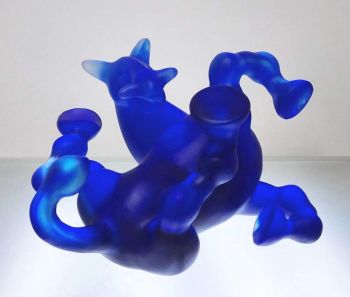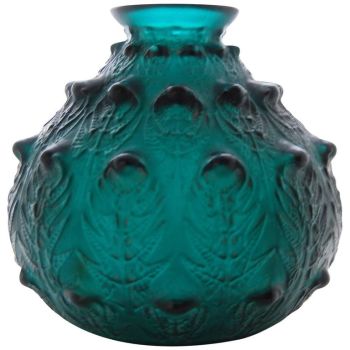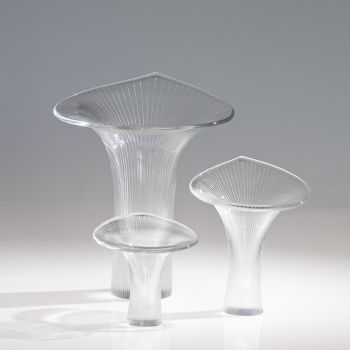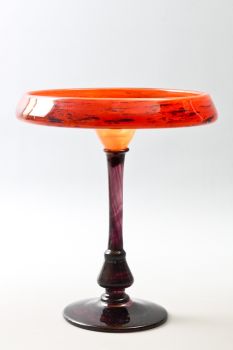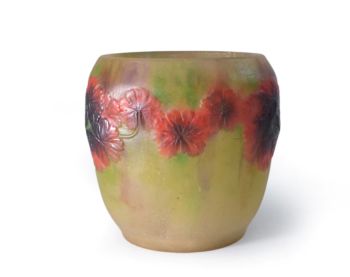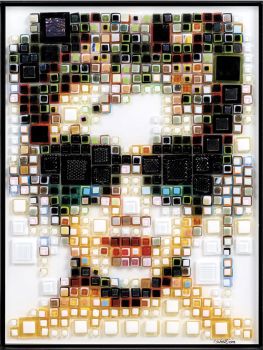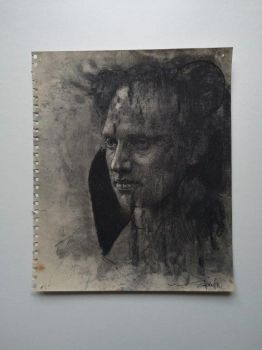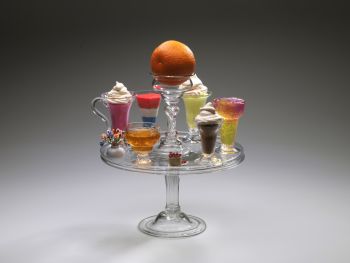World Exhibition Paris 1900 vase by Franz Hofstoetter – Cobalt Papillon 1899 - 1900
Johann Loetz (Lötz) Witwe Klostermühle
Bicchiere
ConditionMint
Attualmente non disponibile tramite Gallerease
- A proposito di opere d'arteThe worldwide breakthrough and recognition of Johann Loetz Witwe arose from the great success and achievement of a Grand Prix medal during the World Exhibition in Paris in the year 1900 (Paris Universelle 1900). In preparation for the World Exhibition, Max Ritter von Spaun hired the painter Franz Hofstoetter (1871 – 1958) in 1899. His task was to create innovative designs that were exclusively exhibited during the world exhibition in Paris. Franz Hofstoetter designed a series of designs and decors that were so innovative that they are considered modernist for this period.
The design of this vase is one of Franz Hofstoetter's most unusual designs. Seen from the top, the vase appears to float above the surface on which the vase is placed. The flat, wide belly and the narrowing in the neck ensure that the incidence of light in each part of the vase is different, resulting that color and brilliance are always different. The shape shows clear characteristic features of Hofstoetter's design principles.
Identical models are known in museum collections and some private collections. This model was produced in a small amount in the decor Cobalt Papillon, Orchis and Phänomen Genre 358.
This design is production number 355 designed by Franz Hofstoetter for the World Exhibition Paris 1900. - A proposito di opere artista
La vetreria Loetz esisteva a Klostermuhle, in Austria, da poco più di cento anni, a partire dal 1840. Ma il suo periodo di massimo splendore fu durante la vita di Max Ritter Von Spaun, nipote dell'originale Johann Loetz che aveva fondato l'azienda.
Von Spaun rilevò l'azienda nel 1879 e la diresse fino al 1908, un anno prima della sua morte. Fu assistito da Eduard Prochaska, suo tecnico specialista, e insieme inventarono, progettarono e produssero tutta una serie di meravigliosi nuovi tipi di vetro, ottenendo numerosi brevetti e vincendo premi in tutte le maggiori esposizioni mondiali durante gli anni 1890 e i primi anni del il nuovo secolo.
L'azienda Loetz era tra i leader nel design Art Nouveau e in particolare nel vetro artistico iridescente. Il vetro "Papillon", come il vaso a sinistra, è talvolta noto oggi come vetro "macchia d'olio". Un'altra colorazione preferita di Loetz era il vetro irridizzato con scie tirate chiamato vetro "Fenomeno".
C'erano vasi irrigiati con nastri di colori metallici che si snodavano sulla superficie, e molti disegni spettacolari con scie applicate di bellissimi colori, o semplicemente tirati fuori dal corpo del vetro per formare maniglie o decorazioni.
Intorno al 1900 l'azienda iniziò a collaborare con designer esterni e alcuni grandi artisti disegnarono pezzi per Lotz, in particolare Joseph Hofmann, Koloman Moser, Maria Kirchner e Hofstatter.
Nel 1908 Loetz fu rilevata dal figlio di Max Von Spaun, anche lui chiamato Max, e sebbene stentasse finanziariamente (fallendo nel 1911 e di nuovo nel 1931) ci furono diversi grandi designer il cui lavoro fu prodotto da Loetz in quegli anni e attraverso l'arte periodo déco. Questi includevano Adolf Beckert e Michael Powolny.
Artwork details
Related artworks
Johann Loetz (Lötz) Witwe Klostermühle
Johann Loetz Witwe – Jugendstil Cobalt Papillon vaas1900 - 1910
Prezzo su richiestaAntiques Emporium
Johann Loetz (Lötz) Witwe Klostermühle
Johann Loetz Witwe - Flamarion Titania bowl – Franz Hofstätter1900 - 1910
Prezzo su richiestaAntiques Emporium
Johann Loetz (Lötz) Witwe Klostermühle
Johann Loetz Witwe – Phänomen Genre vaas in blauw opaal – 19021902 - 1903
Prezzo su richiestaAntiques Emporium
Johann Loetz (Lötz) Witwe Klostermühle
Johann Loetz Witwe - Phänomen Genre 7773 – Orange1900 - 1910
Prezzo su richiestaAntiques Emporium
1 - 4 / 8Johann Loetz (Lötz) Witwe Klostermühle
Johann Loetz Witwe - Flamarion Titania bowl – Franz Hofstätter1900 - 1910
Prezzo su richiestaAntiques Emporium
1 - 4 / 24Gabriel Argy-Rousseau
Gabriël Argy-Rousseau – Crabes et Algues vase – 19201920 - 1929
Prezzo su richiestaAntiques Emporium
1 - 4 / 24René Lalique
Un rarissimo vaso "Fougeres" verde intenso disegnato da R. Lalique1912
€ 8.950Lennart Booij Fine Art and Rare Items
 A cura di
A cura diSilla Scheepens
Artista Sconosciuto
Un rare filigrane un gobelet retortoli1550 - 1600
Prezzo su richiestaPeter Korf de Gidts - Antiquairs
Artista Sconosciuto
Salver ou Tazza avec verre orange, verres à gelée et crème anglaise.1750 - 1755
Prezzo su richiestaPeter Korf de Gidts - Antiquairs
1 - 4 / 24

